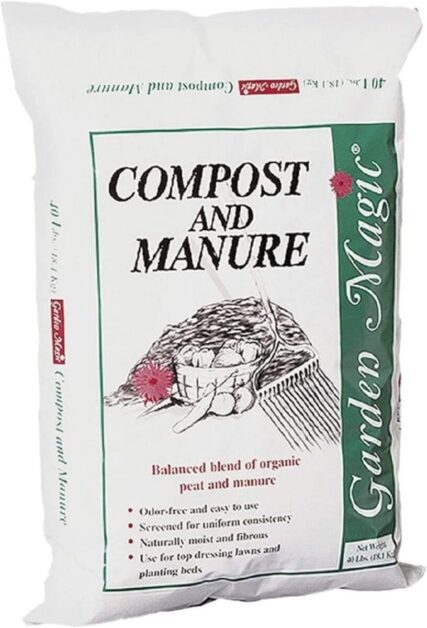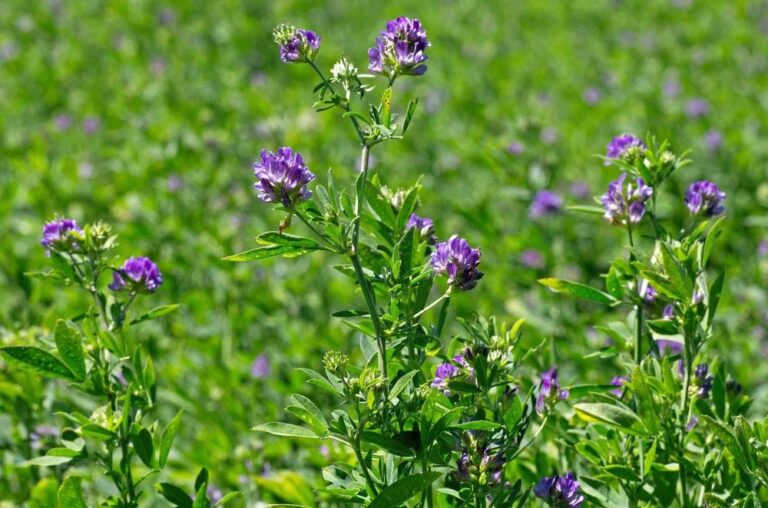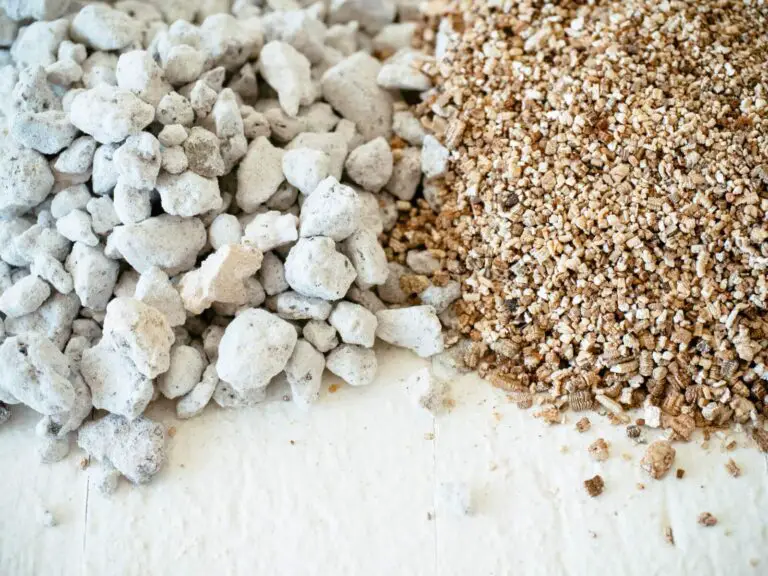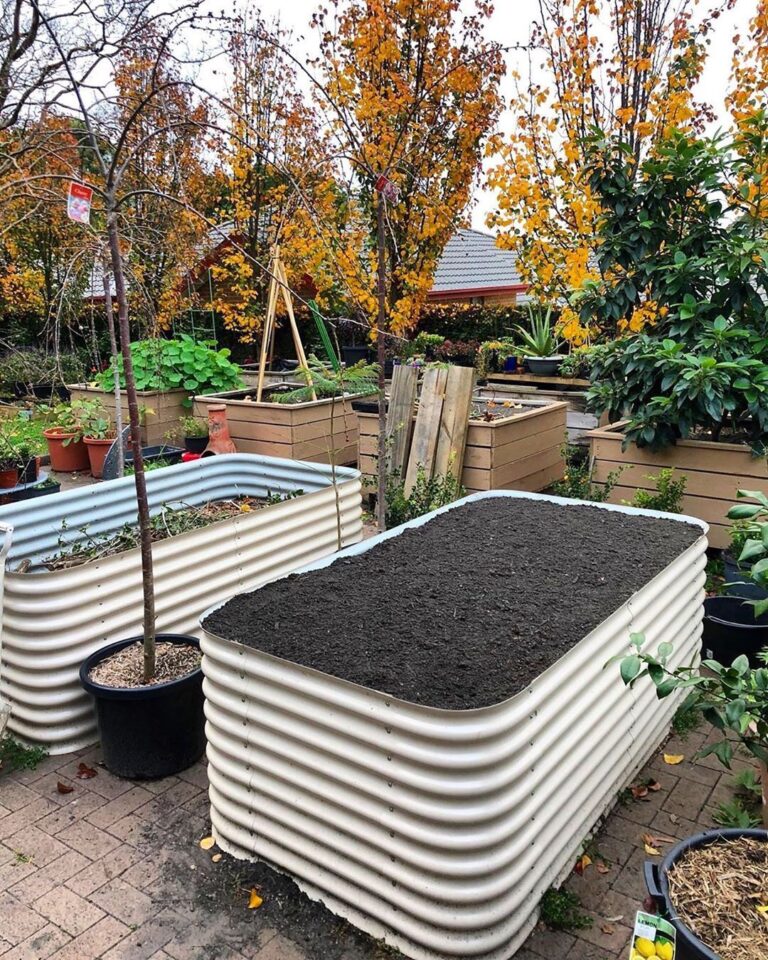Manganese (Mn) Nutrient Deficiencies: Causes, Symptoms, and Solutions for Your Plants
Ever wondered why your lush green plants suddenly start looking sickly? It might not be just the lack of water or sunlight. Enter manganese (Mn), a vital nutrient often overlooked in gardening conversations. From stunted growth to yellowing leaves, manganese deficiencies can wreak havoc on your beloved greens. But fear not, fellow gardeners! In this comprehensive guide, we’ll delve into the causes, symptoms, and, most importantly, solutions for combating manganese deficiencies in your plants. Whether you’re a seasoned gardener or a novice with a green thumb, understanding the role of manganese is key to nurturing thriving greenery. So, let’s roll up our sleeves and get ready to revive those wilted wonders!
Table of Contents
Understanding the Role of Manganese in Plant Nutrition
Manganese is an essential micronutrient for plant growth and development. Despite its requirement in small quantities, it plays a crucial role in various physiological processes within plants.

- Manganese is essential for photosynthesis, serving as a cofactor for enzymes that synthesize chlorophyll, the pigment responsible for capturing light energy and converting it into chemical energy.
- Beyond photosynthesis, manganese plays a vital role in plant antioxidant defense systems by activating enzymes that neutralize harmful reactive oxygen species, safeguarding plant cells from oxidative damage.
- Manganese is also crucial for the metabolism of other important plant nutrients such as nitrogen and iron, ensuring their efficient utilization within the plant.
- Additionally, manganese contributes to the synthesis of proteins and carbohydrates, pivotal for overall plant growth and development.
- Insufficient manganese supply can lead to various nutritional deficiencies in plants, adversely affecting their growth and productivity.
- Recognizing the significance of manganese in plant nutrition is paramount for gardeners and farmers to maintain optimal nutrient levels for their crops.
By recognizing the role of manganese and its impact on plant physiology, we can better appreciate its significance in promoting healthy and thriving plants.
Common Causes of Manganese Deficiencies in Plants
Manganese is an essential micronutrient for plants, playing a critical role in various physiological processes. However, deficiencies in manganese can occur in plants due to a variety of reasons.

- Soil pH Levels: One common cause of manganese deficiencies is soil pH levels. When the soil pH is highly alkaline or acidic, the availability of manganese to plants decreases, leading to deficiencies.
- Soil Compaction: Soil compaction can contribute to manganese deficiencies. When the soil becomes compacted, it hinders the movement and uptake of manganese by plant roots. This can lead to plants not being able to obtain an adequate supply of this micronutrient, causing deficiencies and negative impacts on growth and development.
- Excessive Levels of Certain Nutrients: Excessive levels of certain nutrients, such as iron, calcium, or magnesium, can interfere with the absorption and utilization of manganese by plants. These nutrient imbalances can disrupt the delicate equilibrium required for optimal plant nutrition, leading to deficiencies in manganese and other essential elements.
Understanding the common causes of manganese deficiencies in plants is crucial for gardeners and growers. By identifying these factors and implementing appropriate measures, it is possible to prevent or mitigate deficiencies, ensuring healthy and vibrant plant growth.
Recognizing the Symptoms of Manganese Deficiencies in Your Plants
As a dedicated gardener, it is crucial to understand the signs of nutrient deficiencies in your plants, including manganese deficiencies. Manganese is an essential micronutrient that plays a vital role in various plant functions, such as photosynthesis, enzyme activity, and root development. When your plants lack sufficient manganese, they may display distinct symptoms that can help you identify the problem early on.
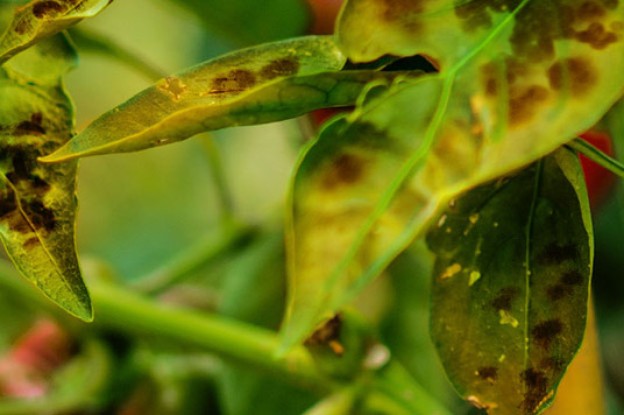
- Interveinal chlorosis is a primary symptom of manganese deficiencies, primarily affecting younger leaves.
- Affected leaves show yellowing or whitening between their veins, while the veins retain their green coloration.
- In severe cases, interveinal areas may turn brown or necrotic, ultimately leading to stunted growth.
- Plants experiencing manganese deficiencies often display reduced leaf size, resulting in smaller overall plant stature.
- Prompt recognition of these symptoms enables gardeners to take appropriate measures to address manganese deficiencies and promote healthy plant growth.
How Manganese Deficiencies Affect Plant Growth and Development
Manganese is an essential micronutrient for plant growth and development. Its presence in plants plays a crucial role in various physiological processes, including photosynthesis, enzyme activation, and carbohydrate metabolism. When plants lack an adequate supply of manganese, it can have detrimental effects on their overall health and productivity.

- Impaired Photosynthesis: Manganese deficiencies primarily affect plants by impairing their ability to carry out photosynthesis effectively. Manganese is a key component in the photosynthetic electron transport chain. Without sufficient manganese, plants may experience limited electron flow, leading to reduced energy production and ultimately hampering their growth and development.
- Enzyme Systems Regulation: Manganese is involved in various enzyme systems that regulate plant metabolism. For instance, it activates the enzyme responsible for breaking down carbohydrates, allowing plants to efficiently use stored energy for growth and reproduction. When manganese levels are insufficient, this enzymatic activity can be compromised, leading to impaired carbohydrate metabolism and stunted plant growth.
- Root Development and Nutrient Uptake: Manganese deficiencies can also impact root development and nutrient uptake, further compounding the negative effects on overall plant vitality.
The Importance of Proper Diagnosis for Manganese Deficiencies
Proper diagnosis is a crucial step in identifying and addressing manganese deficiencies in plants. Without an accurate diagnosis, it becomes challenging to implement effective solutions and ensure the optimal growth and development of your plants. By taking the time to diagnose manganese deficiencies correctly, you can save both time and resources, preventing further damage to your plants and maximizing their potential.

- Proper diagnosis is crucial due to the similarity of manganese deficiency symptoms to those caused by other nutrient imbalances or environmental factors.
- Symptoms like chlorosis (yellowing) of leaves or necrosis (tissue death) can also indicate nitrogen or iron deficiencies, as well as pH imbalances.
- Without thorough diagnosis, misinterpretation of symptoms may occur, leading to the application of incorrect treatments and worsening the issue.
- Accurate and detailed diagnosis is essential to identify the specific root cause of the problem and provide tailored solutions to meet the plants’ specific needs.
Testing Soil pH and Manganese Levels for Effective Solutions
Soil pH and manganese levels play a crucial role in determining effective solutions for addressing manganese deficiencies in plants. Testing soil pH is essential because it affects the availability of essential nutrients, including manganese. Most plants prefer a slightly acidic to neutral pH, with a range of 6.0 to 7.0 being optimal for manganese uptake.
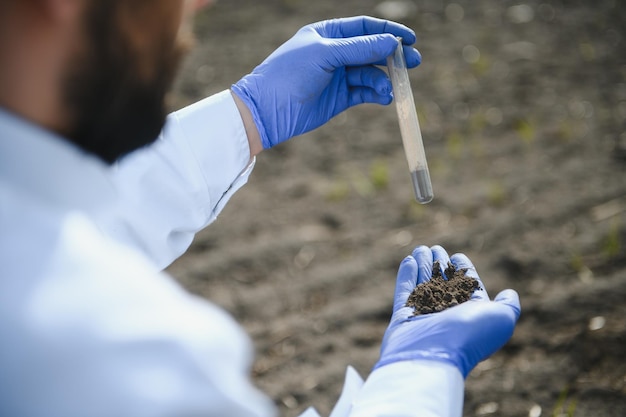
- To test soil pH, utilize a pH testing kit or send a soil sample to a professional laboratory for analysis.
- Results will indicate whether the soil is too acidic or alkaline, allowing adjustments to be made accordingly.
- For acidic soil, adding agricultural lime can raise pH levels, enhancing manganese availability. Conversely, sulfur products can lower pH for alkaline soil.
- Consider the pH preferences of your plant species when adjusting soil pH, as different plants have varying requirements.
- Test manganese levels in addition to soil pH by obtaining soil samples from various areas and sending them for laboratory analysis.
- Insights from manganese testing will inform decisions on addressing deficiencies, ensuring informed solutions for healthy plant growth.
By testing soil pH and manganese levels, you can gain valuable information on the current nutrient status of your soil. This data serves as a foundation for developing effective solutions to combat manganese deficiencies and promote healthy plant growth and development.
Correcting Manganese Deficiencies Through Fertilization Techniques
Fertilization techniques can be an effective way to correct manganese deficiencies in plants.
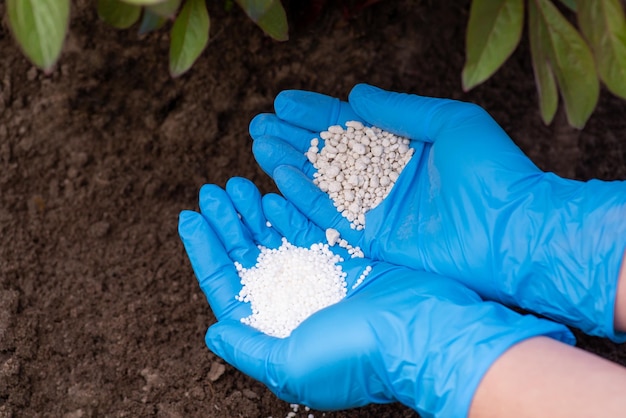
- Foliar Application: This method involves spraying a liquid fertilizer containing manganese directly onto the leaves of the affected plants. This allows the plants to quickly absorb the nutrient and address the deficiency. It is important to follow the manufacturer’s instructions for dilution and application rates to ensure that the plants receive the appropriate amount of manganese without causing any harm.
- Soil Amendment: This approach involves adding manganese-rich fertilizers directly to the soil. This is particularly useful when the deficiency is widespread or affecting multiple plants in a given area. The fertilizer can be spread evenly across the soil surface or incorporated into the soil using cultivation equipment. Regular monitoring of soil pH and manganese levels is crucial to determine the appropriate amount of fertilizer needed and to prevent over-fertilization. Additionally, it is important to choose a fertilizer that contains the appropriate form of manganese to ensure optimal uptake by the plants.
Having used VPG Fertilome Manganese Sulfate Granules in my gardening endeavors, I found them to be a reliable supplement for enhancing plant growth. The granules dissolve easily, ensuring efficient absorption by plants, and the manganese content promotes healthy foliage and overall vitality. However, the application process can be a bit tedious, requiring precise measurement and distribution to avoid overuse. Despite this minor inconvenience, the noticeable improvement in plant health makes these granules a valuable addition to any gardening routine.
- Manganese sulfate content enriches soil and promotes healthy plant growth.
- Granular form allows for easy application and even distribution.
- Suitable for various plants, including those with manganese deficiency symptoms.
- Helps prevent and treat yellowing leaves caused by manganese deficiency.
- Can be used in conjunction with other fertilizers for comprehensive plant nutrition.
- May not be suitable for plants that do not require additional manganese.
- Granular form may take longer to dissolve and provide nutrients compared to liquid fertilizers.
- Requires careful application to prevent overuse and potential harm to plants.
- Packaging could be improved for easier storage and handling.
- Limited information available on specific application rates and frequency.
Organic Approaches to Prevent and Treat Manganese Deficiencies
In organic gardening, preventing and treating manganese deficiencies requires a holistic approach that focuses on improving soil health and providing plants with balanced nutrition.
:max_bytes(150000):strip_icc()/GettyImages-1423388554-2dc0d71d8cd342a985be5f92cdb37047.jpg)
- Incorporate organic matter into the soil, like compost or well-rotted manure, to enhance soil fertility and improve nutrient retention, including manganese.
- Utilize cover crops and crop rotations to replenish soil with a diverse plant nutrients, breaking the cycle of nutrient deficiencies and reducing the risk of imbalances.
- Maintain optimal soil pH for manganese availability, ideally within a range of 5.5 to 7.5, by conducting regular soil tests and adjusting pH as needed.
- Organic soil amendments such as agricultural lime or elemental sulfur can be applied to raise or lower pH levels accordingly.
- By implementing these strategies, gardeners can promote healthy plant growth and mitigate the risk of manganese deficiencies in their crops.
By maintaining proper soil pH, organic gardeners can foster optimal conditions for manganese uptake and utilization by plants.
This premium compost from Michigan Peat has revolutionized my gardening endeavors. Its finely crafted blend of organic materials has significantly enhanced the health and vitality of my plants. From vibrant flowers to robust vegetables, everything I’ve cultivated with this compost has flourished beyond expectations. Despite its slightly higher cost compared to other options, the exceptional quality and noticeable results justify the investment.
Additionally, I appreciate how versatile this compost is. Whether I’m using it as a soil amendment, top dressing, or even in potting mixes, its consistency and nutrient-rich composition consistently deliver outstanding outcomes. Plus, knowing that it’s sustainably sourced adds another layer of satisfaction to my gardening experience.
✅ 40-pound bag provides ample supply for large gardening projects.
✅ Organic and natural, suitable for use in organic gardening practices.
✅ Helps retain moisture in the soil and improves soil structure.
✅ Enhances nutrient content, fostering healthier and more robust plants.
❌ Some users reported the presence of debris or foreign matter in the compost.
❌ May have a strong odor initially, although it dissipates over time.
❌ Requires storage in a cool, dry place to prevent clumping and spoilage.
❌ Relatively bulky packaging may be challenging to handle for some users.
The Role of Water Management in Preventing Manganese Deficiencies
Water management plays a crucial role in preventing manganese deficiencies in plants. The availability of manganese in the soil is highly dependent on factors such as pH and oxygen levels, both of which can be regulated through effective water management practices.
- Proper irrigation practices, such as maintaining consistent soil moisture levels, can help ensure that plants have access to an optimal range of manganese.
- Overwatering can lead to the leaching of manganese from the soil, while underwatering can decrease the uptake of manganese by plants.
- By monitoring soil moisture levels and providing the right amount of water at the right time, gardeners can prevent fluctuations in manganese availability and promote healthy plant growth.
Identifying Other Nutrient Imbalances that May Contribute to Manganese Deficiencies
Nutrient imbalances in the soil can have a significant impact on the availability and uptake of manganese by plants. While manganese deficiencies can occur on their own, they are often exacerbated by other nutrient imbalances. It is important to identify these imbalances in order to effectively address manganese deficiencies.
| Identifying Nutrient Imbalances for Manganese Deficiencies | Key Elements and Considerations |
|---|---|
| 1. pH Levels | – Acidic Conditions: Low pH can hinder manganese availability to plants. |
| – Alkaline Conditions: High pH may lead to reduced manganese absorption. | |
| 2. Iron Levels | – Competitive Uptake: High iron levels can inhibit manganese uptake. |
| – Balanced Ratios: Maintain a proper iron-to-manganese ratio in soil. | |
| 3. Calcium Levels | – Calcium Interference: Excessive calcium can interfere with manganese absorption. |
| – Proper Balance: Ensure a balanced calcium-manganese relationship. | |
| 4. Magnesium Levels | – Antagonistic Interaction: High magnesium can impede manganese absorption. |
| – Optimal Ratios: Maintain appropriate magnesium-to-manganese ratios. | |
| 5. Copper Levels | – Copper Competition: Excessive copper can compete with manganese for uptake. |
| – Balanced Levels: Ensure a balanced copper-manganese relationship. | |
| 6. Zinc Levels | – Zinc Antagonism: High zinc levels may interfere with manganese uptake. |
| – Balanced Ratios: Maintain proper zinc-to-manganese ratios in the soil. | |
| 7. Organic Matter and Microbial Activity | – Microbial Relationships: Healthy soil microbial activity aids in nutrient availability. |
| – Organic Matter Content: Adequate organic matter contributes to balanced nutrition. |
The Impact of Environmental Factors on Manganese Availability
Environmental factors play a crucial role in determining the availability of manganese in the soil and its subsequent uptake by plants.
- The presence of elements like iron, calcium, and aluminum can affect manganese solubility and its accessibility to plant roots.
- Soil pH levels significantly influence manganese availability, with acidic soils typically having higher levels of available manganese compared to alkaline soils.
- Soil moisture levels and drainage patterns also play a role, with excessive moisture or poor drainage leading to waterlogged soils and reduced oxygen levels, affecting manganese solubility.
- In anaerobic conditions, soluble manganese may leach away, reducing its availability for plant uptake.
- Conversely, drought conditions can increase soil salinity levels, causing manganese to bind tightly to soil particles and reducing its availability to plants.
- Understanding the impact of these environmental factors is essential for maintaining optimal plant nutrition and addressing manganese deficiencies effectively.
By considering the local climate, soil characteristics, and drainage patterns, gardeners and agronomists can implement appropriate management strategies to ensure sufficient manganese levels for healthy plant growth and development.
Strategies for Long-Term Prevention and Management of Manganese Deficiencies
Long-term prevention and management of manganese deficiencies in plants can greatly enhance their overall health and productivity.

- Maintain Appropriate Soil pH Levels: Manganese availability is highest in slightly acidic to neutral soils, with a pH range of 5.5 to 7.0. Regularly testing your soil pH and adjusting it as needed can help optimize manganese uptake by plants. Incorporating organic matter into the soil can help improve its cation exchange capacity and enhance manganese availability, reducing the risk of deficiencies.
- Ensure Balanced Nutrient Management: Manganese deficiencies can also be caused by imbalances in other essential nutrients, such as iron or magnesium. Conducting regular soil and plant tissue tests can provide valuable insights into nutrient levels and ratios, allowing for targeted fertilization to address any deficiencies or imbalances. Implementing a comprehensive fertilization program that combines both conventional and organic approaches can provide a balanced nutrient supply and promote optimal plant growth and development.
- Consult with Experts: Each plant species has its own specific nutritional requirements, so it is advisable to consult with local agricultural extension services or horticulture experts to tailor your manganese management approach to the specific needs of your crops or garden. This can help foster healthy and thriving plants.
Evaluating the Success of Manganese Deficiency Solutions for Your Plants.
Evaluating the success of manganese deficiency solutions for your plants is crucial to ensure their healthy growth and development. After implementing interventions to address manganese deficiencies, it is important to assess their effectiveness and make any necessary adjustments.
- Evaluate the success of manganese deficiency solutions is by closely monitoring the affected plants, observing overall health, growth rate, and presence or absence of deficiency symptoms.
- Look for improvements in leaf color, size, texture, flowering, and fruiting, indicating enhanced plant health.
- Take note of any recurring or new symptoms suggesting persistent or underlying issues that need attention.
- Conduct periodic soil tests to measure manganese levels and other soil properties, comparing results before and after implementing deficiency solutions.
- Analyze changes in soil nutrient availability to assess the impact of implemented strategies and make necessary adjustments.
- Recognize that the time frame for evaluating success may vary based on plant species and deficiency severity, requiring patience and consistent monitoring.
- Understand that there may not be a universal solution for all cases of manganese deficiencies, necessitating flexibility and experimentation with different approaches for optimal results.
By conducting careful evaluations and making informed decisions based on your observations and scientific data, you can ensure the long-term health and vitality of your plants.
Watch video for more information:
FAQ
What are some common symptoms of manganese deficiencies in plants?
Some common symptoms of manganese deficiencies in plants include yellowing of leaves with green veins, interveinal chlorosis (yellowing between leaf veins), stunted growth, and reduced fruit production.
How does manganese deficiency affect plant growth and development?
Manganese deficiency can negatively impact plant growth and development by impairing photosynthesis, nutrient uptake, and enzyme activity. This can lead to reduced plant vigor, poor root development, and overall stunted growth.
Are there other nutrient imbalances that can contribute to manganese deficiencies?
Yes, manganese deficiencies can be influenced by imbalances in other nutrients, such as high levels of iron, calcium, or magnesium in the soil. These imbalances can interfere with manganese uptake by plants.
What is the role of water management in preventing manganese deficiencies?
Proper water management plays a crucial role in preventing manganese deficiencies. Excessive irrigation or poor drainage can lead to waterlogged soils, which reduce the availability of manganese to plants. On the other hand, drought conditions can also affect manganese uptake.
How can soil pH and manganese levels be tested for effective solutions?
Soil pH and manganese levels can be tested using soil testing kits or by sending samples to a professional laboratory. This information helps determine the acidity or alkalinity of the soil and the presence of manganese, allowing for appropriate solutions to be implemented.
What are some organic approaches to prevent and treat manganese deficiencies?
Organic approaches to prevent and treat manganese deficiencies include using compost or organic matter to improve soil fertility, utilizing organic fertilizers with balanced nutrient ratios, and employing crop rotation and cover cropping techniques.
How do environmental factors impact manganese availability?
Environmental factors such as soil temperature, moisture levels, and microbial activity can impact the availability of manganese to plants. Cold temperatures and waterlogged conditions can hinder manganese uptake, while warm temperatures and proper soil moisture promote its availability.
What are some long-term strategies for preventing and managing manganese deficiencies?
Long-term strategies for preventing and managing manganese deficiencies include maintaining optimal soil pH, practicing crop rotation, monitoring nutrient levels regularly, improving soil fertility through organic matter additions, and implementing efficient irrigation and drainage systems.
How can fertilization techniques be used to correct manganese deficiencies?
Fertilization techniques such as foliar sprays or soil applications of manganese-containing fertilizers can be used to correct manganese deficiencies. These techniques increase the availability of manganese to plants, promoting healthy growth and development.
How important is proper diagnosis for manganese deficiencies?
Proper diagnosis for manganese deficiencies is crucial to accurately identify the issue and implement appropriate solutions. It ensures that the specific problem is addressed, preventing unnecessary treatments that may not effectively resolve the deficiency.

Studied Agricultural Engineering-Plant Protection at University of California, Davis.
Head of Content writing team at Southelmontehydroponics.com



